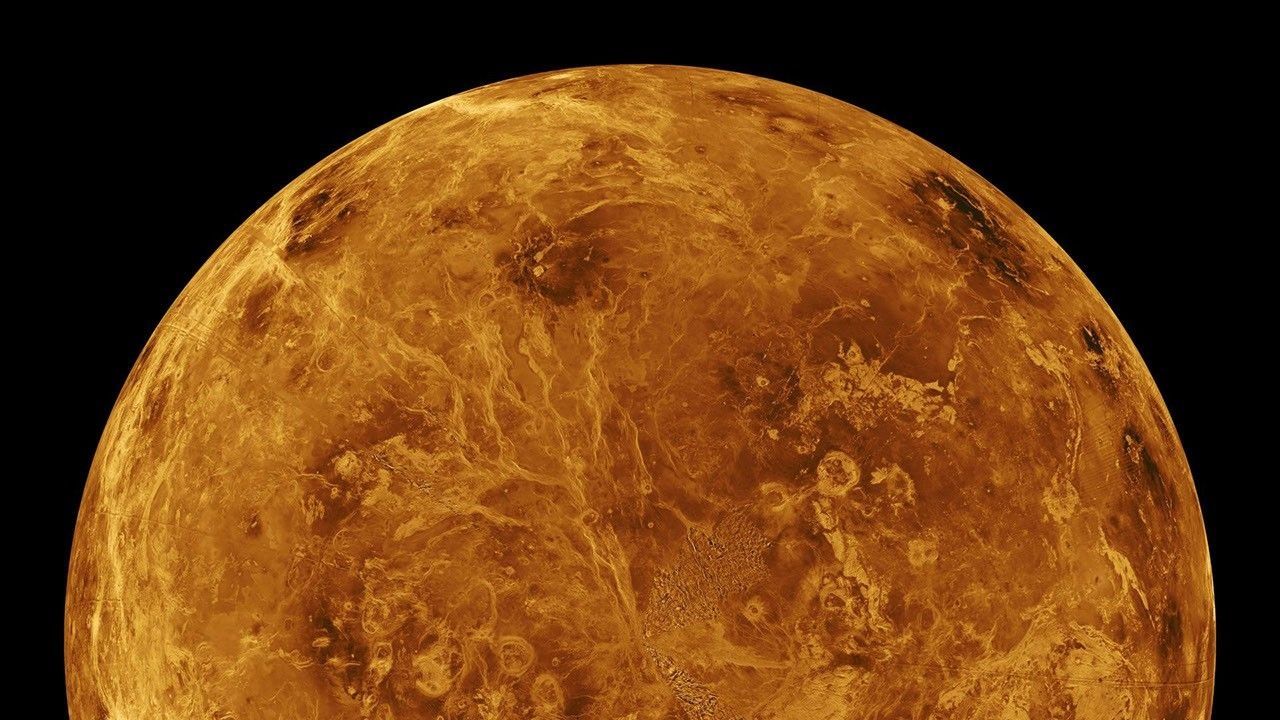Research into the geological features of Venus has revealed a potential explanation for its crown-like structures, known as coronae. According to a study published on September 16, 2023, in the journal PNAS, scientists propose that a phenomenon referred to as a “glass ceiling” in Venus’ mantle is responsible for trapping heat and facilitating slow-moving currents. These currents may ultimately lead to the formation of the distinctive coronae on the planet’s surface.
Lead author Madeleine Kerr, a doctoral candidate at the University of San Diego‘s Scripps Institution of Oceanography, emphasized the significance of their findings. “On Venus, there is a pattern that is telling us something,” Kerr noted. “We think what we found is the key to unlocking the mystery of the origin of these coronae.”
Venus and Earth share similarities in size and proximity to the sun, earning them the title of “twin” planets. Despite these similarities, their geological characteristics differ significantly, particularly with the presence of coronae unique to Venus. Researchers have identified over 700 coronae across the planet, which vary in size and complexity. The formation of these structures remains a challenge to understand, especially since Venus features a continuous crust, unlike Earth’s dynamic tectonic plates.
Several theories have attempted to explain the origins of these coronae, particularly the larger ones, which exceed 310 miles (500 kilometers) in diameter. Some hypotheses suggest that they result from mantle plumes or tectonic processes like subduction. In contrast, smaller coronae, averaging around 124 miles (200 kilometers) in diameter, are thought to arise from smaller upwellings of hot material, similar to the behavior of wax in a lava lamp.
Despite these theories, establishing a cohesive understanding of Venus’ geological processes has proven elusive. David Stegman, a geosciences professor at Scripps, compared the current understanding of Venus to the pre-plate tectonic era of the 1960s, noting the absence of a unifying theory to explain how the planet’s internal heat influences its surface features.
The researchers propose that cold material descending from the surface encounters a barrier at a depth of approximately 370 miles (600 kilometers). Known as the “glass ceiling,” this layer inhibits most rising plumes from reaching the surface, causing them to spread laterally instead. Only the largest plumes can break through, leading to the formation of substantial volcanic structures.
The study indicates that the heat trapped beneath this ceiling remains in a semi-liquid state, providing a reservoir of warmth that generates smaller-scale thermal instabilities. “This layer of warm fluid trapped between 600 to 740 km provides a global source of smaller-scale thermal instabilities,” the researchers explained in their paper.
Utilizing computational models, the team demonstrated that these small-scale plumes may originate naturally. Cold rock from Venus’ crust cools and sinks, triggering a series of events that result in the upward movement of hot rock pockets. Unlike previous studies that assumed hot blobs were already present beneath the lithosphere, this research illustrates a plausible natural origin for these initial conditions.
As these secondary plumes rise and cool, they can contribute to the diverse shapes of coronae observed on Venus. The models suggest that this mechanism is viable when the mantle temperature is between 250 to 400 kelvins hotter than that of Earth; however, the duration of such conditions remains uncertain.
Researchers acknowledged the need for further investigations. Future studies should employ three-dimensional models of plume dynamics, consider melting processes both inside and on the surface, and explore various mantle compositions. Such advancements will enhance understanding of how Venus’ internal heat and movements shape its coronae, volcanoes, and overall geological landscape.
